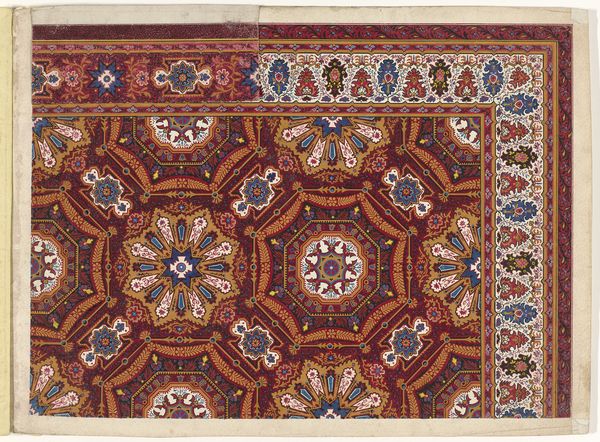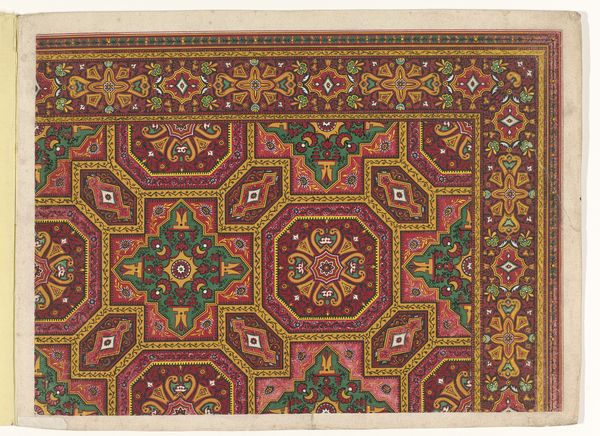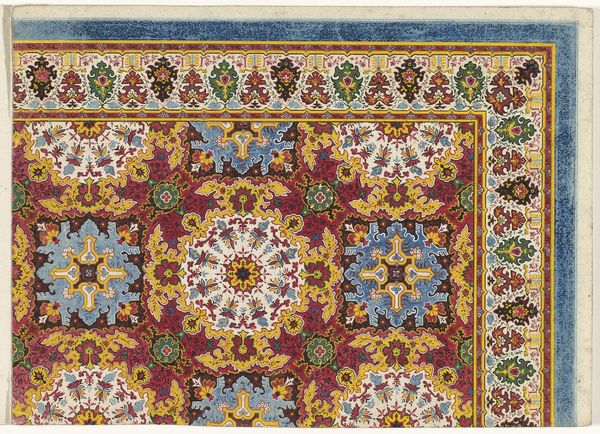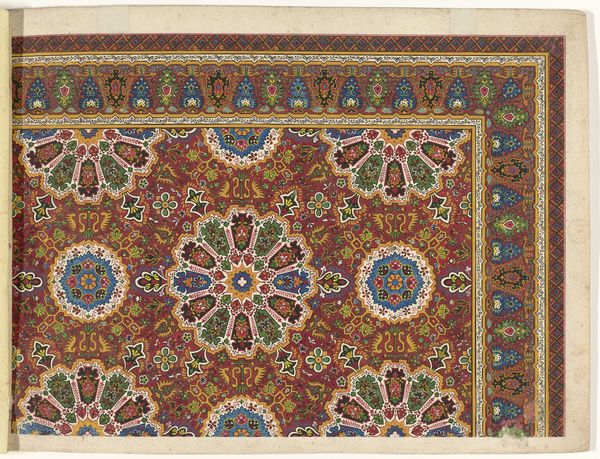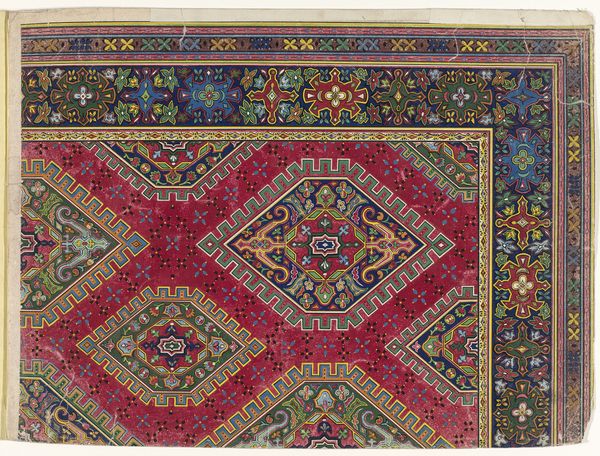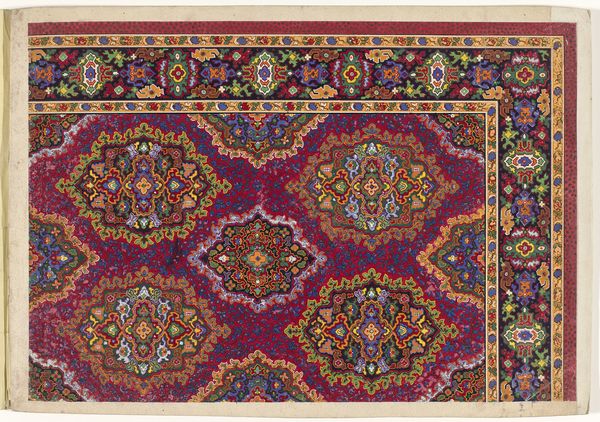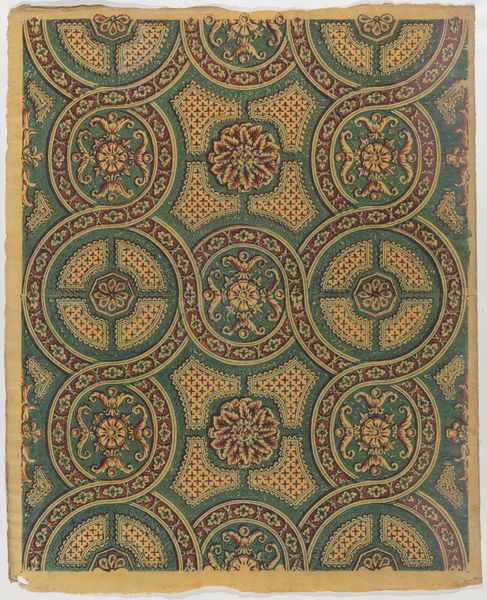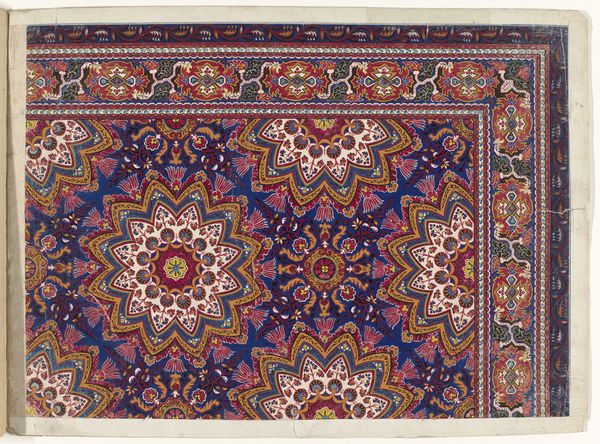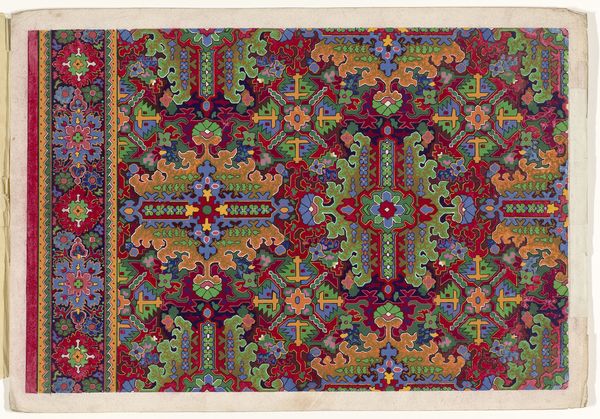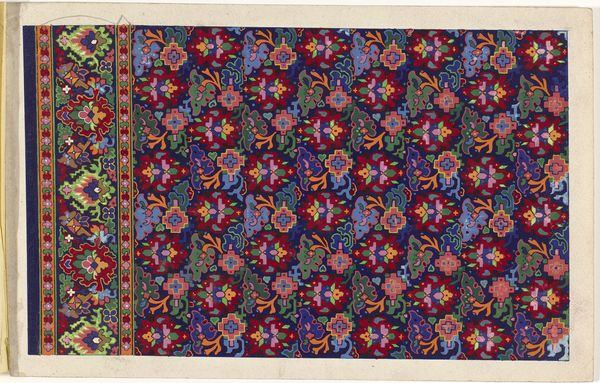
drawing
#
pattern heavy
#
drawing
#
natural stone pattern
#
naturalistic pattern
#
geometric pattern
#
repetitive shape and pattern
#
ethnic pattern
#
geometric
#
repetition of pattern
#
vertical pattern
#
pattern repetition
#
layered pattern
Dimensions: height 390 mm, width 286 mm
Copyright: Rijks Museum: Open Domain
Editor: This is "Ontwerp voor een tapijt," a carpet design from around 1854-1864, created by an anonymous artist. It’s a drawing, and the level of detail is quite stunning! It strikes me as incredibly dense and intricate. How do you interpret this work? Curator: I see a deep conversation with cultural memory embedded in those complex geometric patterns. Think about the carpet itself: throughout history, rugs and tapestries served not just as décor but also as potent symbols of power, wealth, and cultural identity. Consider its symbolic function beyond its mere utility. Editor: So, the artist is not simply designing a carpet, but invoking something larger? Curator: Exactly. The specific motifs -- the rosettes, stars, and interconnected shapes – speak to an Orientalist fascination of the mid-19th century, a Western gaze upon the artistic traditions of the Middle East and Asia. But they’re not exact copies. Editor: How so? Curator: Notice how these motifs are being reinterpreted through a European artistic lens, influenced by the Arts and Crafts movement with the repetition, layering, and combination with a naturalistic pattern. Do you see how the image oscillates between imitation and creative invention? Editor: Yes, I do see that now! The European style introduces new creative elements, moving beyond pure duplication. Curator: Right. So this work really explores a cultural dialogue and a shifting understanding of identity, both personal and collective, across geographic boundaries. Editor: That is a perspective I would not have found on my own. Now it seems there is much more depth to this design than meets the eye. Curator: Indeed. It shows us that symbols can carry layered meanings, reflecting not just their origin but also the journey they undertake through different cultures and periods.
Comments
No comments
Be the first to comment and join the conversation on the ultimate creative platform.
